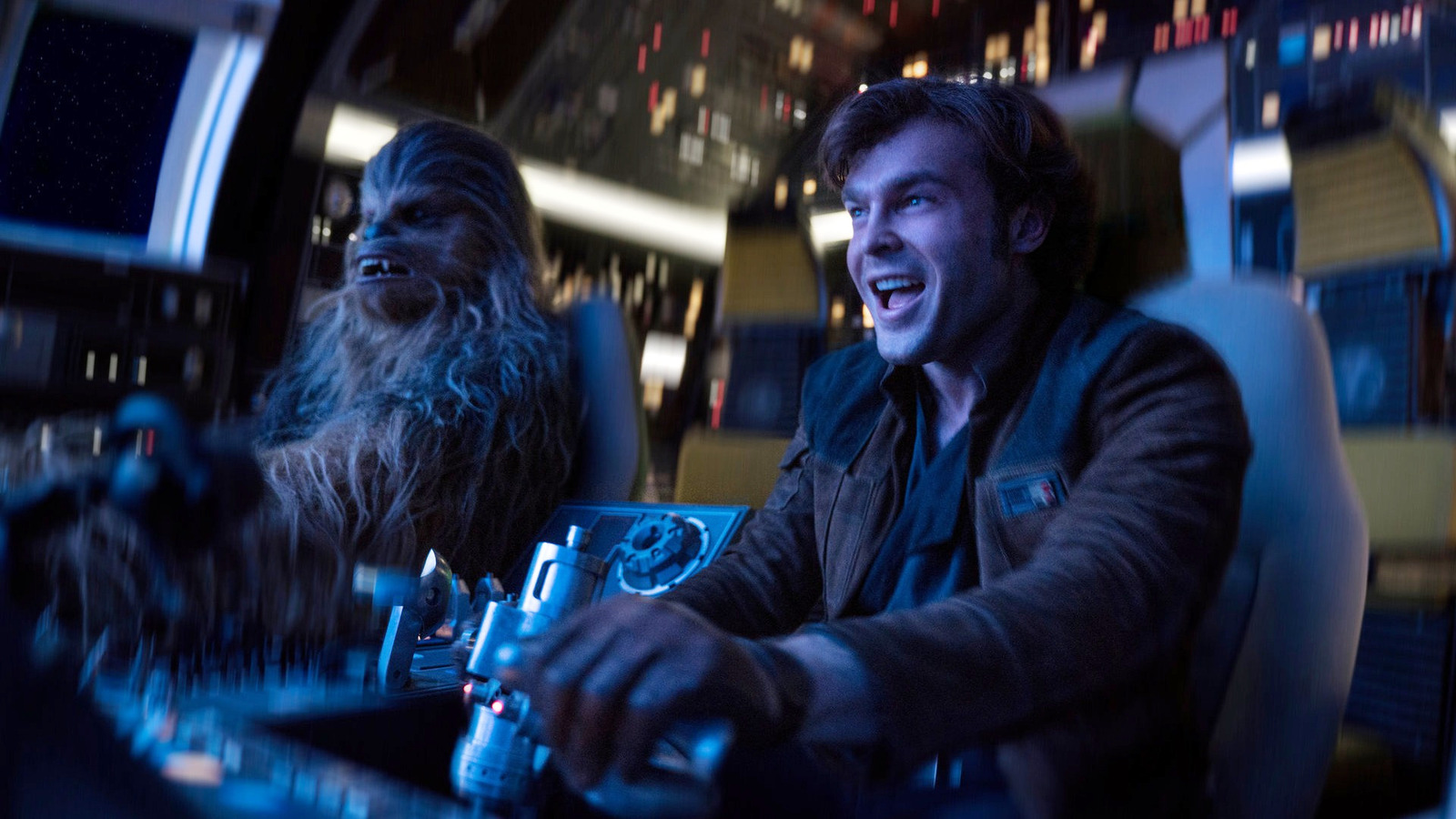
Bredow defined that the entire Kessel Run sequence was staged “end-to-end dwell,” with all of the contributing facets, together with lighting, VFX, and different cues being executed on the fly, the place a regular (and intelligent) use of rear projection, together with cutting-edge tech from Industrial Mild & Magic (ILM), helped deliver the sequence to life:
“We wrapped a complete 180-degree display across the cockpit of the Millennium Falcon, and had a number of projectors throwing media onto that utilizing rear projection, one of many oldest methods within the e book. However we used new know-how from ILM, creating a complete world of the Kessel Run in excessive decision to be placed on these screens. When the actor pulls the extent to enter hyperspace, they actually see the celebs bleeding out like that.”
This degree of element helped improve actor immersion, and the concept of a 20-minute-long steady take helped refine the finer particulars of the sequence. Director of Images Bradford Younger labored together with his gaffing workforce whereas “lighting and media cues” have been employed concurrently, and the Millennium Falcon was “about 12 or 15 toes within the air on a gimbal” that could possibly be moved or spun round as was handy. Though the bodily area through which the shot was filmed was considerably cramped, the sheer scale and scope of the sequence have been efficiently conveyed with the assistance of spectacular rear projection:
“One of many enjoyable issues that rear projection allowed was a contemporary compositional factor: The shot the place Han first walks into the cockpit, with L3 and Lando sitting on the controls, you see Han’s face gentle up once they soar into hyperspace. Higher but, you’ll be able to see the reflection of the celebs in his eyeballs.”


